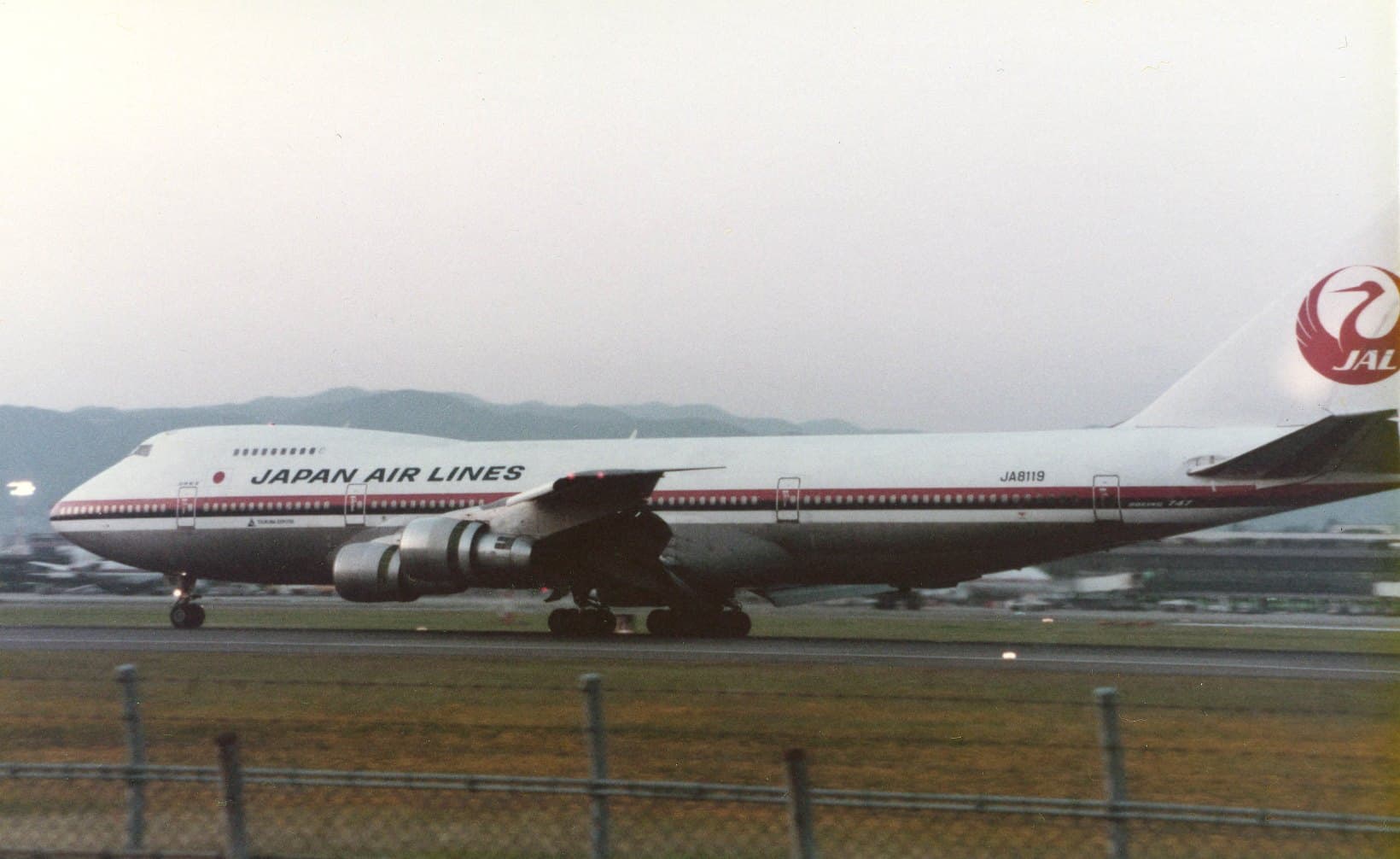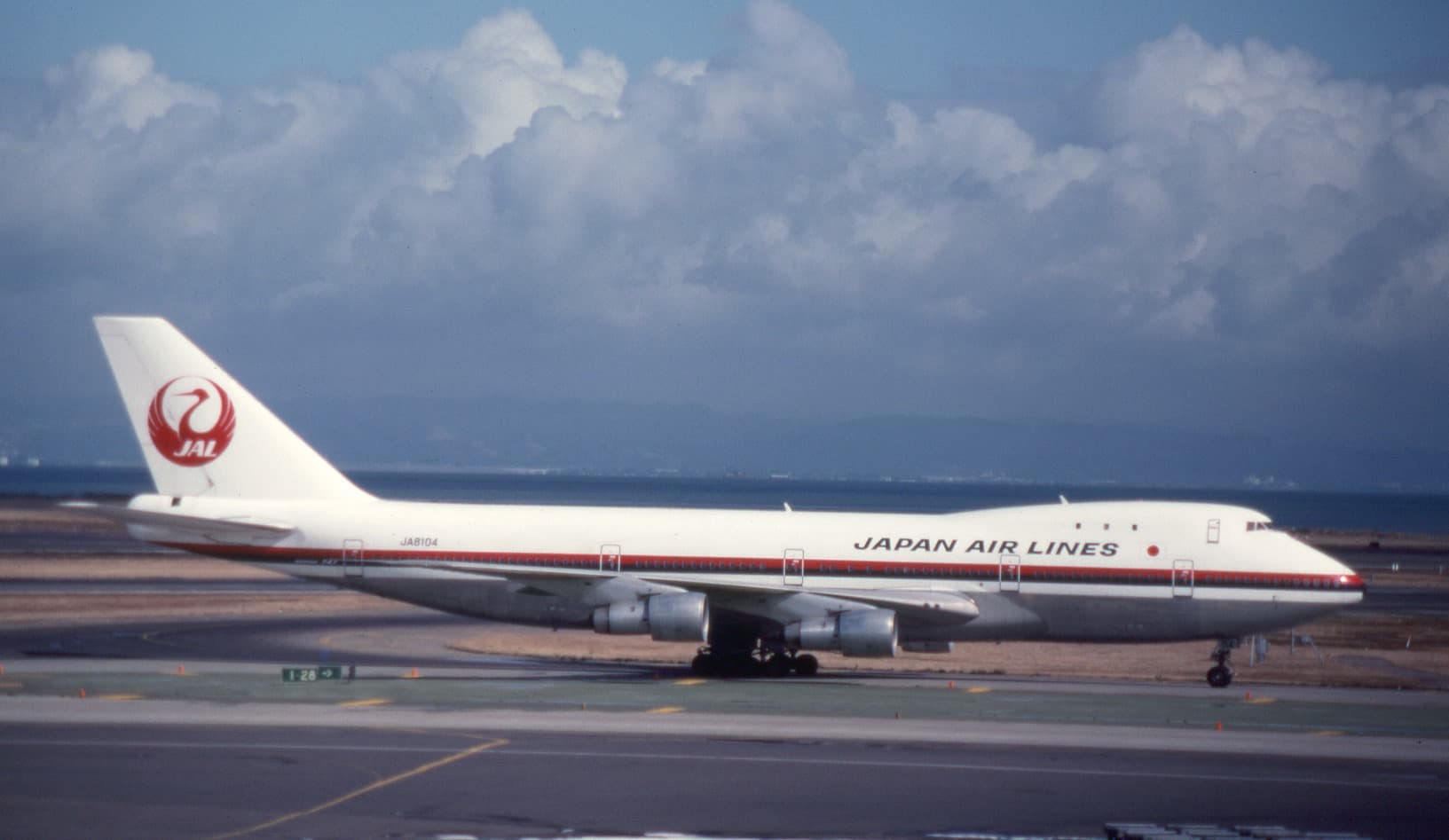Amazingly, There Were Survivors of the Impact, But Rescue Efforts Were Inexplicably Delayed
On Monday, 12 August 1985 at 1812 local time, Japan Airlines Boeing 747SR-46 jetliner serial number 20783/230 registered as JA8119 and operating as JAL Flight 123 or JAL 123, departed runway 15L at Tokyo Haneda Airport bound for Osaka International Airport with 524 souls on board- 3 flight crew, 12 flight attendants, and 509 passengers.
The jet had entered service on 28 January 1974 and had accumulated more than 25,000 airframe hours and more than 18,800 cycles. The 747 was flying its fifth of six planned flights that day.

An Experienced Crew on the Flight Deck
The flight deck was manned by 49-year-old Captain Takahama Masami of Akita, Japan. Masami’s logbook indicated about 12,400 total flight hours, with about 4,850 of 747 time.
The First Officer was 39-year-old Sasaki Yutaka of Kobe, Japan. Yutaka had about 4,000 total flight hours, 2,650 of which were in the 747. The Flight Engineer was 46-year-old Fukuda Hiroshi of Kyoto, Japan. Hiroshi had approximately 9,800 total flight hours and 3,850 in 747s.

A Seven-Year Period Between Cause and Effect
Seven years prior to the flight from Haneda to Osaka on 2 June 1978, JA8119 had suffered a tail strike while landing at Osaka as JAL 115. The aircraft sustained damage to the rear fuselage and was inspected and repaired as needed (IRAN) by Boeing.
One of the repairs made was to add a splice plate on the aft pressure bulkhead. This repair was improperly made. The ensuing seven years of the jet’s regular operations gradually weakened the aft pressure bulkhead. The repair failed 12 minutes into the flight of JAL 123 at an altitude of 23,900 feet and at a speed of 300 knots over Sagami Bay at 1824 local time.
The resulting rapid decompression brought down the cabin ceiling near the aft lavatories, damaged the unpressurized fuselage aft of the pressure bulkhead, caused the vertical stabilizer and rudder to depart the aircraft along with the tailcone containing the auxiliary power unit (APU), and, worst of all, severed all four hydraulic lines routed through the area.

Uncontrolled Descent Into Mountainous Terrain
The flight crew immediately squawked 7700 and broadcast their Mayday call. Tokyo Center suggested JAL Flight 123 divert to Nagoya, but Masami wanted to try to return to Haneda. Conventional control of the 747 ended when hydraulic pressure dropped to zero, rendering the ailerons, elevators, and yaw damper inoperative.
The aircraft began to oscillate in the pitch and yaw axes. The crew tried lowering flaps and gear, but directional control was only possible via differential throttle settings- eerily similar to UAL 232 four years later. By the time the aircraft reached an altitude of 13,500 feet, it was uncontrollable. The aircraft descended below 7,000 feet and climbed to over 13,000 feet before losing radar contact.

Four Survivors – But the Count Could (and Should) Have Been Higher
After clipping a wing on one ridge and slamming into a second ridge, JA8119 impacted the ground inverted at coordinates 36°0′5″N, 138°41′38″E and 5,135 feet up on Osutaka Ridge near Mount Takamagahara, Ueno, Gunma Prefecture, 62 miles from Tokyo. Some passengers survived the crash but died of their injuries at the scene.
A US Air Force Lockheed C-130H from the 345th Tactical Airlift Squadron (TAS) found the crash site first. Despite US Marine Corps, US Navy, and US Air Force personnel being ready and waiting to deploy to the crash site, their assistance was inexplicably declined by Japanese authorities. In the end, only four of the 524 souls on board JAL Flight 123 survived the crash, making this the deadliest single-aircraft accident in aviation history and the second-deadliest overall after only the Tenerife 747 collision.

The Legacy of JAL Flight 123
The accident had a wide-reaching effect in Japan. JAL paid $6.7 million to the victim’s relatives without admitting liability for the accident. JAL’s president resigned, and a maintenance manager committed suicide. The engineer who inspected the jet and signed off on the repair also committed suicide. Flight number 123 was never used by JAL again.
The route became Flight 127. JAL gradually switched from flying 747s to Boeing 767 and 777 aircraft and sent its few remaining 747s to the boneyard in 2011. The following video with cockpit voice recorder (CVR) audio of the last minutes of JAL Flight 123 was uploaded to YouTube by KaykEigh. WARNING: Not for the faint of heart.
[youtube id=”Xfh9-ogUgSQ” width=”800″ height=”454″ position=”left”]

[…] Next post […]